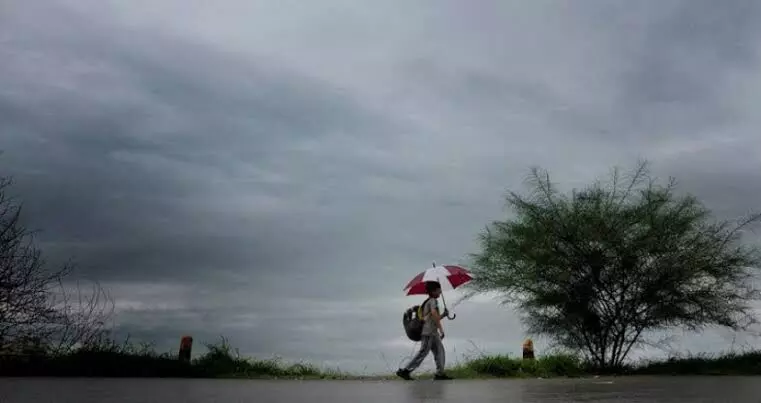Goodbye Sawan: IMD announces beginning of southwest monsoon's retreat
This monsoon season, India has received 780.3 mm of rain so far, compared to the normal figure of 832.4 mm. Rainfall within 94 to 106 percent of the long-period average (LPA) is considered normal.
By Anoushka Caroline Williams
Representational Image.
Hyderabad: India Meteorological Department (IMD) has announced the beginning of the southwest monsoon's retreat from northwest India, marking a critical juncture in the country's weather patterns and agricultural calendar.
This shift in weather conditions has significant implications for regions like Hyderabad and the agricultural sector as a whole.
Monsoon Retreat Timeline
The southwest monsoon traditionally sets in over Kerala around June 1, covering the entire country by July 8. Its withdrawal from northwest India typically begins around September 17 and concludes by October 15. However, this year, the IMD predicts a slightly delayed retreat, starting around September 25.
Impact on Agriculture
The retreat of the monsoon from northwest India signifies the start of its withdrawal from the Indian subcontinent. Any delay in this retreat extends the rainy season, which can have a substantial impact on agricultural production. This effect is particularly pronounced in northwest India, where monsoon rainfall is pivotal for Rabi crop cultivation.
Rainfall Statistics
This monsoon season, India has received 780.3 mm of rain so far, compared to the normal figure of 832.4 mm. Rainfall within 94 to 106 percent of the long-period average (LPA) is considered normal. Typically, India receives an average of 870 mm of precipitation during the four-month monsoon season from June to September.
IMD's Pre-Monsoon Predictions
In its pre-monsoon briefing, the IMD forecasted a normal monsoon for India, though on the lower side of normal. It also cautioned about the potential influence of El Nino, a phenomenon characterized by warming waters in the Pacific Ocean near South America, which can weaken monsoon winds and result in drier conditions in India.
Hyderabad Weather Implications
For Hyderabad and the surrounding regions, the delayed monsoon retreat may mean continued precipitation for a little longer. While this can be beneficial for water reservoirs and agriculture, it could also lead to waterlogging and related issues in urban areas.
Varied Monsoon Trends
India's monsoon season this year has been marked by varying trends. June witnessed a rainfall deficit, while July experienced excessive precipitation due to western disturbances over northwest India and the favorable phase of the Madden-Julian Oscillation (MJO). The MJO, a large-scale atmospheric disturbance originating in tropical Africa and traveling eastward, significantly impacts weather patterns in the Indian subcontinent.
However, August 2023 presented a different picture, being the driest month since 1901 and the hottest ever recorded in India, attributed to the strengthening of El Nino conditions. In contrast, September brought an excess of rain due to multiple low-pressure systems and the positive phase of MJO.
The commencement of the southwest monsoon's retreat is a pivotal moment in India's meteorological calendar, with implications for agriculture and regional weather patterns.
Hyderabad, like many other parts of the country, will continue to experience monsoon effects, and residents and farmers alike must remain vigilant and adaptable in the face of these shifting weather conditions.